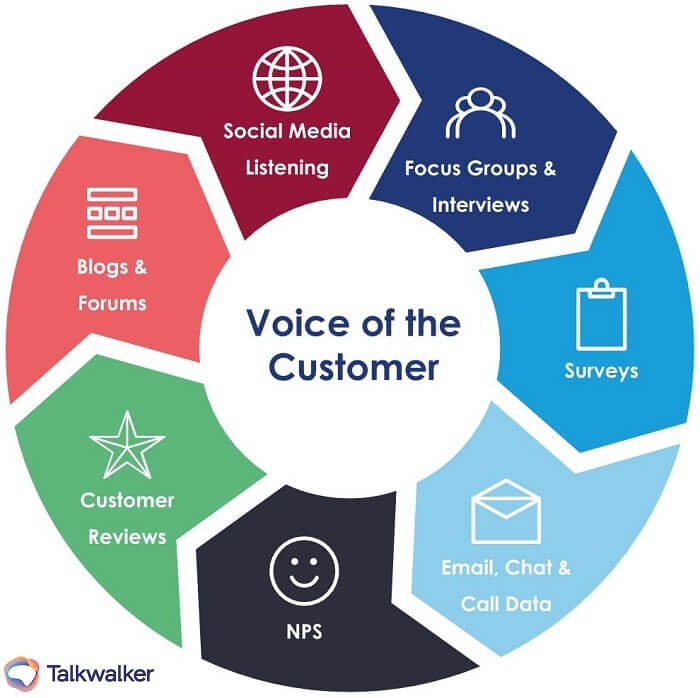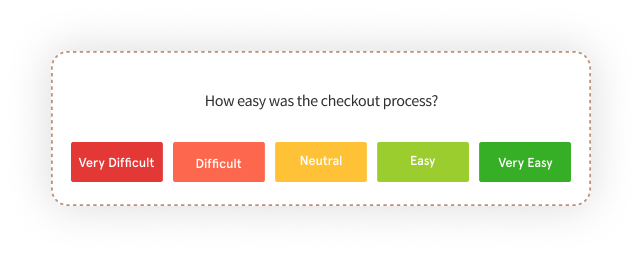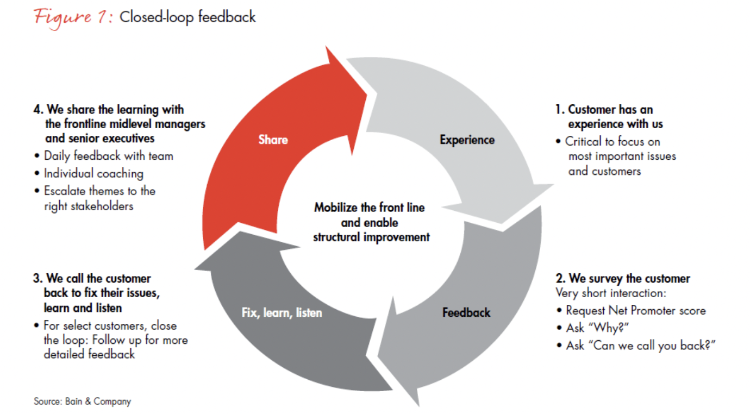blog»Conversion Rate Optimization»The Power of Listening: Timberland’s Path to E-commerce Innovation through Surveys

The Power of Listening: Timberland’s Path to E-commerce Innovation through Surveys
2024/03/04
You can read this article in about 30 minutes
In today’s fast-paced e-commerce landscape, the voice of the customer has never been more crucial. Amidst the sea of competition and the endless pursuit of innovation, one brand stands out for its strategic use of customer feedback to steer its course: Timberland. This outdoor lifestyle brand, renowned for its rugged footwear and apparel, tapped into a goldmine of insights through meticulously crafted customer surveys, demonstrating the transformative power of listening. In this post, we delve into Timberland’s journey, uncovering how they leveraged customer opinions not just to navigate but to lead in the competitive e-commerce space.

By prioritizing the voices of those who matter most—their customers—Timberland has crafted an inspiring blueprint for e-commerce success. Join us as we explore the key strategies and decisions that propelled them forward, setting a benchmark for brands striving to align closer with their customer base and drive meaningful innovation. This narrative is more than just a success story; it’s a testament to the importance of customer feedback in sculpting an e-commerce experience that truly resonates.
Section 1: The Crucial Role of Surveys in E-commerce
In the digital age, the e-commerce landscape is constantly evolving, shaped by changing consumer behaviors and technological advancements. Amidst this flux, customer surveys have emerged as an indispensable tool for e-commerce businesses. They serve as a direct line to the consumer, offering unfiltered insights into their needs, preferences, and pain points. This feedback is invaluable, enabling brands to tailor their products, services, and overall user experience to meet the demands of their target audience.
Surveys go beyond traditional market research by providing real-time feedback that can drive immediate improvements. They allow businesses to test hypotheses quickly, understand customer satisfaction levels, and identify areas for improvement. In the context of e-commerce, where competition is fierce and customer loyalty is fleeting, understanding the customer’s voice can mean the difference between success and failure.
Moreover, surveys can help e-commerce marketers uncover hidden trends and consumer sentiments that might not be visible through data analytics alone. While analytics can show what customers are doing, surveys explain why they are doing it. This deeper understanding can guide strategic decisions, from website design changes to product development and marketing strategies.
Incorporating regular customer feedback mechanisms into an e-commerce strategy is not just beneficial; it’s essential for staying relevant and competitive. By embracing the power of surveys, e-commerce brands can create more personalized shopping experiences, improve customer satisfaction, and ultimately, drive higher conversion rates and customer loyalty.
Section 2: Designing Effective Surveys
Creating an effective survey is a fine balance between art and science. It’s not merely about asking questions; it’s about asking the right questions in the right way. For e-commerce marketers, the objective is to craft surveys that not only engage customers but also yield actionable insights. This starts with brevity; a survey should respect the customer’s time and patience. Ideally, it should take no longer than five minutes to complete, focusing on clear, concise questions that directly relate to the customer’s experience.
Equally important is the balance between open-ended and closed-ended questions. Closed-ended questions provide data that’s easy to analyze and can offer quick insights into specific areas of interest. However, open-ended questions are invaluable for understanding the nuances of customer opinions and experiences. They can uncover issues or suggestions that marketers hadn’t considered.

Timing and placement of the survey also play a critical role in response rates and relevance of feedback. Post-purchase surveys or those triggered after significant interaction with the site can provide insights into the buying process and user experience. However, these should be deployed judiciously to avoid survey fatigue.
Incentivizing survey participation can significantly increase response rates. However, the incentive should be appropriate and should not bias the responses. A discount on the next purchase or entry into a giveaway are examples of incentives that can motivate customers to share their honest feedback.
Lastly, iteration is key. E-commerce is dynamic, and customer preferences can change rapidly. Regularly updating surveys based on previous results, current trends, and new objectives ensures the feedback remains relevant and actionable. By adhering to these principles, e-commerce marketers can design surveys that are not only effective but also integral to their ongoing strategy for customer engagement and improvement.
Section 3: Implementing Surveys in E-commerce
Implementing surveys effectively in an e-commerce setting involves more than just drafting questions and waiting for answers. It requires strategic planning, technological integration, and a focus on customer experience. The first step is deciding on the method of survey delivery. Options range from pop-ups on your website to email surveys sent post-purchase. The method chosen should align with the goal of the survey and the typical customer journey on your site.
Segmentation plays a crucial role in survey implementation. Not all customers have the same experiences or preferences, so tailoring surveys to different segments can yield more relevant and actionable insights. For instance, new visitors might receive a different set of questions compared to repeat customers. Advanced e-commerce platforms can automate this segmentation, ensuring that the right surveys reach the right customers at the right time.
Technical integration is another critical aspect. Surveys should be seamlessly integrated into the e-commerce platform, providing a smooth experience for users without disrupting their shopping journey. This might require working with web developers or using third-party tools that easily integrate with your site. Just like Ptengine!

Timing is everything when it comes to survey participation. Ask for feedback too early, and the customer might not have enough experience to provide it; ask too late, and the moment may have passed. Finding the optimal time—such as after a purchase or a significant interaction—can improve response rates and the quality of feedback received.
Finally, transparency and communication can enhance survey effectiveness. Let customers know why you’re asking for feedback and how it will be used. This not only increases the likelihood of participation but also builds trust and reinforces the value you place on customer input. By implementing surveys thoughtfully and strategically, e-commerce marketers can gain deep insights that drive informed decision-making and foster stronger customer relationships.
Section 4: Analyzing and Acting on Survey Data
Once you’ve collected survey data, the next step is to analyze the responses and translate them into actionable strategies. This begins with a thorough review of the collected data, identifying trends, patterns, and anomalies. Quantitative data from closed-ended questions can be graphically represented to spot these trends at a glance. However, qualitative data from open-ended questions require a more nuanced approach, often involving textual analysis or sentiment analysis to gauge customer sentiment and feedback.
The real value of survey data lies in its actionability. For e-commerce marketers, this means identifying clear, specific areas for improvement or innovation. For example, if customers consistently highlight issues with the checkout process, this area becomes a priority for technical revisions or user interface improvements. Similarly, if a particular product receives consistently poor reviews, it may need to be reevaluated or discontinued.

Prioritization is crucial when acting on survey data. Not all feedback will be equally important or feasible to address immediately. Create a roadmap for implementing changes, starting with those that will have the biggest impact on customer satisfaction and business performance. This could mean starting with quick wins that can be easily addressed, followed by more complex issues that require greater time and resources.
Transparency with your customers about the changes being made is also important. Communicate what you’ve learned from the surveys and what you’re doing about it. This not only closes the feedback loop but also builds customer trust and loyalty by showing that you value and act on their input.
Finally, the process of analyzing and acting on survey data should not be a one-time event but a continuous cycle. Regularly updating and reevaluating your surveys based on previous outcomes and evolving business goals ensures that your e-commerce platform remains responsive to customer needs and market trends.
Section 5: The Timberland Success Story
Timberland’s journey from a brand facing dwindling popularity and revenue to becoming a customer-centered powerhouse offers profound insights for any e-commerce platform. The transformation began with a strategic shift: from being product-centered to becoming intensely customer-focused. This pivot was anchored on a two-year comprehensive customer study that involved 18,000 shoppers from eight different countries.

The aim was clear: Timberland needed to understand who its customers truly were. The surveys delved into lifestyle-focused questions, aiming to paint a detailed picture of Timberland’s average customer. This wasn’t just about demographics but getting to the core of their lifestyle preferences, fashion influences, outdoor activities, and spending habits. Through this exhaustive data collection, Timberland identified its core customer base as urban dwellers with a penchant for occasional outdoor activities, contradicting the previous belief that its main customer base was primarily active outdoor enthusiasts.
Armed with these insights, Timberland made pivotal changes. They streamlined their previously bloated product line to focus more on versatile products suited for both urban living and occasional outdoor activities. They extended popular collections and introduced frequent discounts to attract the newly identified customer segment.
One of the most significant shifts was in their marketing efforts. Timberland’s previous marketing messages were scattered, failing to resonate with a clear audience. Post-study, they honed in on clear, consistent messaging that catered to the lifestyle and preferences of their core urban customers, emphasizing style while maintaining the brand’s hallmark of function and versatility.
The results of these strategic changes were telling. By the end of 2014, Timberland saw a 15% increase in profits from the previous year, marking it as the most successful year in the company’s history. The clear understanding and focus on the customer not only revitalized the brand but led to impressive sales growth and profitability, projecting revenues to reach $3.1 billion by the end of 2019.

The key takeaway from Timberland’s success story is the undeniable value of deep customer insights. Understanding the customer’s deep values, emotions, and lifestyles can significantly influence product design, marketing strategies, and overall brand positioning. This approach transformed Timberland into a brand with a clear identity, resonating with a specific customer base and leading to substantial business growth.
For any e-commerce business looking to redefine itself or strengthen its market position, Timberland’s story serves as a compelling blueprint. It underscores the importance of aligning products and marketing messages with the actual needs and preferences of your target customers, a strategy that can lead to remarkable turnaround and success.
Section 6: Lessons Learned from Timberland
Timberland’s transformation offers invaluable lessons for e-commerce marketers aiming to revitalize their brand and deepen customer engagement. Here are the key takeaways from Timberland’s successful strategy:
- Customer-Centric Approach: Timberland’s shift from a product-centric to a customer-centric approach underscores the importance of understanding and meeting customer needs. E-commerce businesses should strive to know their customers beyond surface-level demographics, delving into their lifestyles, preferences, and values.
- Data-Driven Decision Making: The extensive customer study that Timberland undertook highlights the value of data-driven decision-making. By collecting and analyzing feedback from a broad customer base, businesses can make informed changes that resonate with their target audience.
- Focused Brand Messaging: Timberland’s previous scattered messaging was refined into a consistent, focused brand narrative that aligned with its core customers’ identities. E-commerce platforms must ensure that their messaging is clear, cohesive, and tailored to the specific needs and preferences of their audience.
- Product Line Streamlining: The decision to streamline Timberland’s product line based on customer feedback was a bold move that paid off. This teaches e-commerce marketers the importance of curating their offerings to match customer preferences, rather than trying to cater to everyone.
- Adapting to Market Changes: Timberland’s ability to adapt to new insights and swiftly implement changes was crucial to its turnaround. E-commerce businesses need to remain flexible and responsive to customer feedback and market trends.
- Long-Term Vision: The two-year duration of Timberland’s study and the subsequent changes demonstrate the importance of having a long-term vision. Quick fixes may yield temporary results, but sustainable growth and brand revitalization require patience, commitment, and a strategic approach.
By applying these lessons, e-commerce marketers can enhance their brand’s relevance, improve customer satisfaction, and drive sustainable growth. Timberland’s story is a testament to the transformative power of customer insights when properly harnessed and acted upon.
Section 7: Building a Continuous Feedback Loop
The revival of Timberland illustrates not just the power of a single round of comprehensive customer feedback but the necessity of establishing a continuous feedback loop. This is a practice e-commerce marketers should embed within their strategies to ensure sustained growth and relevance.

- Integrate Feedback Mechanisms: Incorporate various feedback mechanisms into your e-commerce platform, such as post-purchase surveys, product review sections, and customer service interactions. This ongoing collection of feedback ensures that you remain attuned to customer needs and preferences.
- Act on Feedback Regularly: Don’t let customer feedback sit idle. Regularly review and act on the insights gathered. This could mean tweaking product offerings, adjusting marketing messages, or enhancing user experiences based on customer suggestions and criticisms.
- Communicate Changes to Customers: When changes are made based on customer feedback, communicate this back to your customers. This not only shows that you value their input but also enhances their connection to your brand, as they see their opinions leading to real changes.
- Measure the Impact of Changes: After implementing changes based on customer feedback, measure the impact. Look at sales data, customer satisfaction scores, and website engagement metrics to understand the effectiveness of the changes made.
- Foster a Culture of Listening: Create a company culture that values and acts on customer feedback. This involves training your team to recognize the importance of customer insights and encouraging open communication and collaboration in responding to customer needs.
By building a continuous feedback loop, e-commerce businesses can adapt more swiftly to market changes, improve customer satisfaction, and drive better business outcomes. This proactive approach to customer feedback ensures that your e-commerce platform remains dynamic, customer-focused, and ahead of the competition.
Section 8: Conclusion and Future Directions
The journey of Timberland from market stagnation to renewed brand vitality showcases the profound impact of customer feedback on e-commerce success. This case serves as a powerful testament to the value of listening to and acting on customer insights. For e-commerce marketers, Timberland’s transformation emphasizes the necessity of adopting a customer-first approach, where decisions are driven by genuine customer needs and preferences rather than mere speculation.

As the digital marketplace continues to evolve, e-commerce brands must remain agile, always ready to adapt to new customer behaviors, market trends, and technological advancements. The key to sustained success lies in building and maintaining an ongoing dialogue with customers, ensuring that the brand remains relevant and responsive to their changing needs.
Looking forward, e-commerce marketers should embrace the lessons from Timberland’s success by institutionalizing customer feedback within their strategic planning. This involves not just collecting feedback but embedding a systematic approach to continually integrate customer insights into every aspect of the business, from product development to marketing and customer service.
In conclusion, the essence of e-commerce success in today’s competitive environment is a relentless commitment to understanding and fulfilling customer expectations. By fostering a culture that prioritizes customer feedback and adapts to it dynamically, e-commerce businesses can not only revive their brand but also drive meaningful growth and lasting customer loyalty.